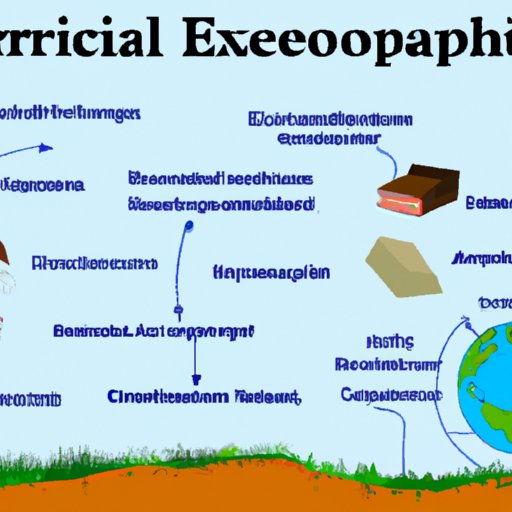Introduction
Earth science is a broad discipline that encompasses a variety of sciences related to the study of the Earth and its components. It is an interdisciplinary field that draws upon the knowledge of physical, chemical, and biological sciences to understand the Earth’s structure, composition, processes, and history. Earth science is divided into several branches, each of which focuses on a specific area of study.

Exploring the Branches of Earth Science
The main branches of Earth science are geology, oceanography, atmospheric science, hydrology, and soil science. Geology is the study of the Earth’s physical structure and its formation. It includes the study of rocks, minerals, and fossils as well as the forces that shape Earth’s surface and interior. Oceanography is the scientific study of the oceans and their many components, such as waves, currents, and sea life. Atmospheric science is the study of the atmosphere and its components, including weather and climate. Hydrology is the study of water and its properties, including its cycle, distribution, and availability. Soil science is the study of soil, its composition, and its role in supporting life. Finally, astronomy is the study of the universe and its many components, including stars, planets, and galaxies.
Understanding the Interdisciplinary Nature of Earth Science
Earth science is not just a collection of separate fields but rather an interdisciplinary study of the Earth and its components. Each branch of Earth science plays an important role in understanding the Earth and its processes. For example, geology provides insight into the Earth’s formation and evolution, while oceanography sheds light on the interactions between the ocean and the atmosphere. Similarly, atmospheric science reveals the connections between the atmosphere and other components of the environment, such as land and water. Together, these branches provide a comprehensive understanding of the Earth and its processes.
In addition to understanding the Earth’s physical processes, Earth science also helps us better understand how humans interact with and impact the environment. For example, by studying the atmosphere, we can learn about air pollution and its impacts on human health. Similarly, by studying hydrology, we can gain insight into water management and the effects of water scarcity. In this way, Earth science helps us better understand our place in the environment and the importance of protecting the Earth’s resources.

A Comprehensive Overview of Earth Science Disciplines
Geology: The scientific study of the Earth’s physical structure and its formation, including rocks, minerals, and fossils.
Oceanography: The scientific study of the oceans and their many components, such as waves, currents, and sea life.
Atmospheric Science: The scientific study of the atmosphere and its components, including weather and climate.
Hydrology: The scientific study of water and its properties, including its cycle, distribution, and availability.
Soil Science: The scientific study of soil, its composition, and its role in supporting life.
Astronomy: The scientific study of the universe and its many components, including stars, planets, and galaxies.
Investigating the Sub-Disciplines of Earth Science
Earth science has many sub-disciplines, each of which focuses on a specific aspect of the Earth or its processes. These include climatology (the study of climate), ecology (the study of ecosystems), geomorphology (the study of landforms), glaciology (the study of glaciers and ice sheets), mineralogy (the study of minerals), and paleontology (the study of fossils). Each of these sub-disciplines contributes to a better understanding of the Earth and its processes.
For example, climatology helps us better understand how climate change affects the Earth’s environment. Ecology sheds light on the interactions between different species and their habitats. Geomorphology provides insight into the formation and evolution of landforms. Glaciology helps us understand the dynamics of ice sheets and glaciers. Mineralogy helps us identify and understand the properties of minerals. And paleontology helps us understand the Earth’s past by studying fossils.
Conclusion
Earth science is an interdisciplinary field that encompasses a variety of sciences related to the study of the Earth and its components. This article explored the branches and sub-disciplines of Earth science, as well as its interconnectedness and role in our lives. Geology, oceanography, atmospheric science, hydrology, soil science, and astronomy are the main branches of Earth science, and each of them has many sub-disciplines. By studying Earth science, we gain a better understanding of the Earth’s physical and biological processes and our own place in the environment.
(Note: Is this article not meeting your expectations? Do you have knowledge or insights to share? Unlock new opportunities and expand your reach by joining our authors team. Click Registration to join us and share your expertise with our readers.)
